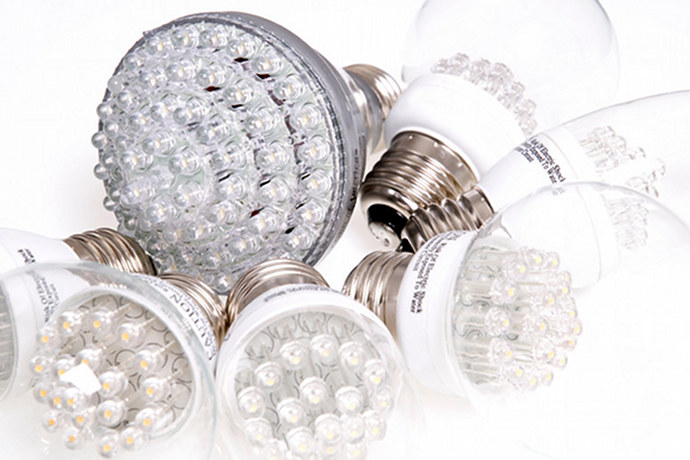Top 10 Reasons why you should use LED Lighting
By far the most energy efficient, the cleanest and most eco-friendly way of illumination is LED lighting, which is basically digital light and comes with a multitude of amazing benefits.
In fact, they make a big leap in technology that can be seen as much of an upgrade as converting from analog to digital. LED is digital light, and the advantages versus conventional ‘analog’ lighting are so huge and of major benefit to both the users of this “technology of digital light” as well as also to our planet.
That’s why we believe there are plenty of good reasons for being passionate about LED illumination and are so glad about offering you our exclusive LED line through LED Supply Co. with quality LED lights from CREE™ LED manufacturers. So let’s break it down and take a closer look at the…
- Long Life
Long life time stands out as the number one benefit of LED lights. LED bulbs and diodes have an outstanding operational life time expectation of up to 100,000 hours. This is over 11 years of continuous operation, or close to 23 years of 50% operation. If you leave on the LED fixture for 8h per day it would take around 34 years before you’d have to replace the LED bulb.
LED’s are different to standard lighting: They don’t really burn out and stop working like a standard light, moreover the lighting diodes emit lower output levels over a very long period of time and become less bright.
- Energy Efficiency
Today’s most efficient way of illumination and lighting, with an estimated energy efficiency of 80%-90% when compared to traditional lighting and conventional light bulbs. This means that about 80% of the electrical energy is converted to light, while 20% is lost and converted into other forms of energy such as heat.
With traditional incandescent light bulbs that operate at 20% energy efficiency only, 80% of the electricity is lost as heat. Imagine the following scenario:
If you use traditional lighting and have an electricity bill of $100, then $80 of that money has been used to heat the room, not to light it! Using LED illumination with 80% efficiency, the electricity costs would be around $20 and you’d have saved around $80.
The long operational life time acts as a multiplier and helps achieve even more energy efficiency, especially large scale and when thinking in terms of urban infrastructure projects, such as cities, railroads and airports.
Think of an airport using energy efficient LED lighting exclusively and achieving a 30% power consumption reduction in comparison with an airport using conventional lighting technology.
Because the long life span of LED lights, also the maintenance work – think of all the work and energy it would take to purchase, stock and change the conventional light bulbs of an airport – you’ll see that you can make significant energy savings also when it comes to maintenance and replacement due to the long operational life times of LED lighting.
- Ecologically Friendly
LED lights are free of toxic chemicals. Most conventional fluorescent lighting bulbs contain a multitude of materials like mercury that are dangerous for the environment.
LED lights contain no toxic materials and are 100% recyclable, and will help you to reduce your carbon footprint by up to a third. The long operational life time span mentioned above means also that one LED light bulb can save material and production of 25 incandescent light bulbs. A big step towards a greener future!
- Durable Quality
LEDs are extremely durable and built with sturdy components that are highly rugged and can withstand even the roughest conditions.
Because LED lights are resistant to shock, vibrations and external impacts, they make great outdoor lighting systems for rough conditions and exposure to weather, wind, rain or even external vandalism, traffic related public exposure and construction or manufacturing sites.
- Nearly Zero UV Emissions
LED illumination produces little infrared light and close to no UV emissions.
Because of this, LED lighting is highly suitable not only for goods and materials that are sensitive to heat due to the benefit of little radiated heat emission, but also for illumination of UV sensitive objects or materials such as in museums, art galleries, archeological sites etc.
- Rebates
Many electrical utility providers, including Xcel Energy, are offering rebates for each new fixture installed. Xcel is even offering a 30% bonus on top of their existing rebates until Dec 12th, 2014 to boost LED installation before the new year.
- Operational in Extremely Cold or Hot Temperatures
LEDs are ideal for operation under cold and low outdoor temperature settings. For fluorescent lamps, low temperatures may affect operation and present a challenge, but LED illumination operates well also in cold settings, such as for outdoor winter settings, freezer rooms etc.
- Light Disbursement
LED is designed to focus its light and can be directed to a specific location without the use of an external reflector, achieving higher application efficiency than conventional lighting. Well-designed LED illumination systems are able to deliver light more efficiently to the desired location.
- Instant Lighting & Frequent Switching
LED lights brighten up immediately when powered on, which has great advantages for infrastructure projects such as traffic and signal lights.
Also, LED lights can switched off and on frequently and without affecting the LED’s lifetime or light emission. In contrast, traditional lighting may take several seconds to reach full brightness, and frequent on/off switching does drastically reduce operational life expectancy.
- Low-Voltage
A low-voltage power supply is sufficient for LED illumination. This makes it easy to use LED lighting also in outdoor settings, by connecting an external solar-energy source and is a big advantage when it comes to using LED technology in remote or rural areas.



One thought on “Top 10 Benefits of LED Lighting”
Great to talk to Loran